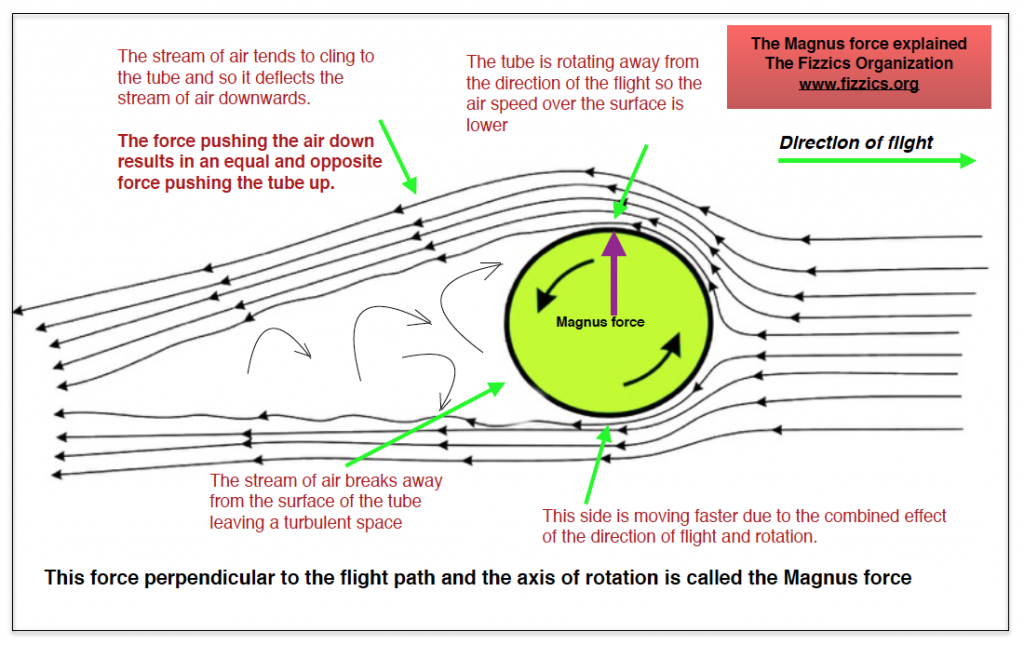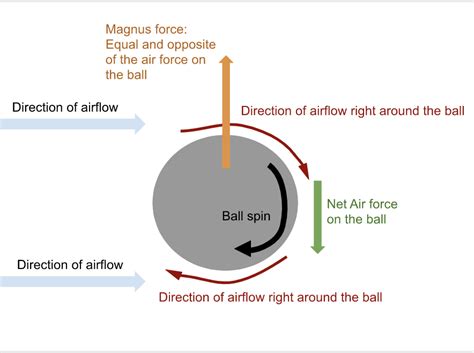The phenomenon of a ball curving in flight, often observed in sports like soccer, baseball, and golf, is primarily due to the Magnus effect. This aerodynamic principle explains how spin influences the trajectory of a ball, causing it to “bend” or “curve” during its path through the air.

Understanding the Magnus Effect
When a ball is struck or thrown with spin, it creates a difference in air pressure on opposite sides of the ball:
- Airflow Interaction: The spin causes the air on one side of the ball to move in the same direction as the ball’s motion, increasing airflow speed. Conversely, on the opposite side, the spin opposes the ball’s motion, decreasing airflow speed.
- Pressure Differential: According to Bernoulli’s principle, increased airflow speed results in lower pressure, and decreased airflow speed leads to higher pressure. This pressure difference generates a force perpendicular to the direction of motion, altering the ball’s trajectory.
This force is what causes the ball to curve toward the side with lower pressure. The magnitude of this curvature depends on factors such as the ball’s spin rate, velocity, and the density of the air.
Examples in Sports
- Soccer (“Bending” the Ball): Players apply spin to the ball to curve it around obstacles, like a defensive wall, aiming for the goal. The spin induces the Magnus effect, allowing skilled players to control the ball’s path effectively.
- Baseball (Curveballs): Pitchers utilize the Magnus effect by imparting spin on the baseball, causing it to deviate from a straight-line path, making it challenging for batters to predict and hit.
- Golf: Golfers often employ intentional spin to influence the ball’s flight path, achieving desired trajectories and distances.
Visual Representation
To illustrate, consider a ball spinning clockwise:
- On the right side, the ball’s surface moves against the airflow, reducing airspeed and increasing pressure.
- On the left side, the surface moves with the airflow, increasing airspeed and decreasing pressure.
This pressure difference causes the ball to curve to the left.

Diagram illustrating the Magnus effect on a spinning ball.
Additional Factors Influencing Ball Curvature
- Surface Texture: The roughness of a ball’s surface can affect airflow patterns, influencing the Magnus effect. For instance, golf balls have dimples to optimize aerodynamic properties
- Environmental Conditions: Air density and weather conditions can impact the degree of curvature experienced by the ball during flight.
Further Exploration
For a more in-depth understanding, you can watch the following video:
This video provides a comprehensive explanation of how the Magnus effect causes a ball to curve in the air, complete with visual demonstrations.

